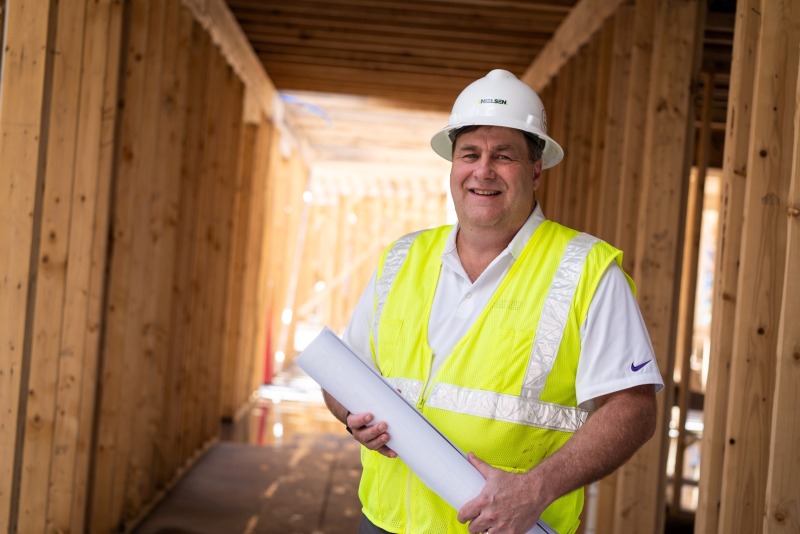Basics Of Homeowner’s Insurance
Buying a home can trigger so many emotions. Excitement, nervousness, hopefulness, and fear all jump on the wagon at certain points throughout the journey. But as with most things in life, learning and getting the facts can help ease our fears, enabling us to make wiser decisions.
Our website is a valuable resource for articles on a variety of financial topics, including real estate and home ownership. In this blog, we tackle the topic of homeowner’s insurance.
What is homeowner’s insurance?
When you own a home, you usually need to purchase a policy to protect the property. Though not required by Virginia law, your mortgage will require it. And even if you don’t have a mortgage, it’s an important safeguard against financial loss.
A homeowner’s insurance policy is designed to protect homeowners from financial loss due to damage to their property or personal belongings. In addition, it covers liability for accidents that occur on their property.
Homeowner’s insurance covers risks like fire, theft, and some damage from storms and can help to cover costs for repairs. Each policy is tailored to the home itself, based on its location, size, materials, and risks. Coverages can vary based on the company and your specific policy. Let’s take a closer look at what homeowner’s insurance policies typically cover.
What does homeowner’s insurance cover?
If you’ve had renters’ insurance in the past, you’ll know that renters’ insurance coverage is limited to personal belongings and liability if someone is injured in the rental. Homeowners’ insurance is a bit different. It does cover your personal property and liability, but its most important job is to cover the home itself.
Most homeowner’s insurance policies contain the following coverages:
- Dwelling: This will cover the cost of damages to the structure of your home, including walls, roof, and foundation, when caused by events like fire, storms, or vandalism.
- Other structures: Covers other structures on your property that aren’t part of your home, such as detached garages, sheds, and fences.
- Personal property: Like renters’ insurance, home insurance can cover your belongings, from furniture to electronics, if they are damaged, stolen, or destroyed in a covered event. However, highly valuable collectibles and jewelry might need an endorsement (also called an “add-on” or “rider”) to cover them.
- Liability: This coverage protects you from lawsuits if someone else (not anyone who lives in the home) is injured on your property, or if you, a pet, or a family member cause damage to another property. A classic example of the latter is if your child were to hit a baseball through your neighbor’s window.
- Medical costs: Pays for medical expenses of guests injured on your property—up to a certain limit.
- Additional Living Expenses: If you are unable to stay in your home due to covered damages, ALE coverage can pay for temporary living costs, like hotel bills and meals.
What is not covered by homeowners insurance?
Homeowners’ insurance covers a wide range of potential expenses—even ones that may not seem to be directly related to your home (like some personal liability claims). But it doesn’t cover everything, and depending on where your home is located, it might be wise to purchase add-ons to insure your property is protected.
Homeowner’s insurance typically does not cover:
- Flood damage: Damage caused by floods usually requires separate flood insurance. If you live in a flood zone or an area prone to flooding, you’ll want to get an additional plan. You can look up your home’s flood risk on FEMA’s Flood Maps.
- Earthquake and sinkhole damage: Earthquakes and sinkholes are also not covered unless you purchase additional insurance. Minor earthquakes are common in Virginia, with almost 200 occurring within the last 50 years. Additionally, many parts of the Shenandoah Valley are more susceptible to sinkholes due to limestone substrate.
- “Wear and tear”: Whether from normal use and exposure or issues with maintenance, wear and tear is expected and not covered.
- Mold damage: Because mold often occurs because moisture isn’t managed properly, it is usually not covered.
- Sewer backup: While you can often add sewer backup coverage, water and other damage from sewer backups is usually not covered.
- Intentional destruction: If you or a family member living in your home damages the property intentionally, it won’t be covered.
- Valuables: As we mentioned above, very expensive items like jewelry, art, or collectibles may not be fully covered without additional riders.
- Home business: You’ll need separate coverage to protect your home business’s property, like equipment.
Every policy will lay out what it covers and what it doesn’t. If you have concerns about coverage for your home or property or aren’t sure how much insurance you need, your insurance agent can help you sort through your risks and requirements.
How do insurance companies determine premium costs?
When an insurance agency creates a coverage plan, they will review details including your home appraisal, property taxes, how and when the home was built (and with what materials), recent improvements, and other property details and risks.
This serves two purposes: determining risks for insuring your home (like older wiring or fireplaces) and knowing how much it will cost to repair or replace your home and the items within.
Some things that might increase your premiums include:
- Having an older home: It may be more expensive to insure an older home not just because they may be in worse repair but also because they tend to be better-constructed, with quality materials like brick and stone, which will cost more to replace.
- Location: Homes in areas prone to natural disasters are generally more to insure.
- Fireplaces and swimming pools: Anything that increases risk for damage or liability will increase your premium. Because wood-burning heating sources increase fire risks, your premium costs will go up if you have one. Swimming pools can create liability risks and may also result in higher premiums.
- Dog breeds: Some dog breeds, especially larger ones that are prone to biting and attacks, may impact your rate.
- Bad credit: Insurers often consider your credit score when setting premiums.
Things that you can do to lower your premium:
- Increase your deductible: Higher deductibles usually mean that smaller issues won’t be reported for a claim, saving your insurance company. They will pass this savings onto you through lower premiums.
- Bundle your insurance policies: See if you can get a lower rate when you use the same company for other insurance needs, like car insurance.
- Improve home security and safety features: Installing smoke detectors, security alarms, and even deadbolt locks may help lower your premium.
How do they know how much my home and property are worth?
Insurance companies can’t know for certain how much everything in your home will cost to repair or replace, but they do have some pretty sophisticated methods for estimating it.
Here are a few methods insurers use to determine how much things are worth.
- Appraisals: For valuable items like jewelry or art, an appraisal helps determine their worth for coverage or payout if they’re damaged or stolen. Your home’s appraisal may also be used to determine its replacement cost.
- Actual Cash Value (ACV): This is what your damaged or lost item is actually worth today, factoring in age and wear. For instance, a five-year-old laptop’s cash value will not be its purchase price but rather what it is worth based on its age and condition.
- Replacement Cost Value (RCV): RCV covers the cost to replace a damaged or lost item with a new one of similar quality without considering depreciation.
- Extended or Guaranteed Replacement Cost: This covers the full cost to rebuild your home, even if it exceeds your policy limits (usually up to a certain percentage).
When you look at your premium details, you might notice there are different designations for value and replacement cost—especially regarding your home. This is because homes often cost more to replace than their market value—especially older, well-built homes.
How does my deductible work?
A home insurance deductible is the amount you must pay out of pocket first—before your insurance company covers anything. For instance, if you have a $2,000 deductible and a tree falls on your roof resulting in $5,000 in damage, your insurance would kick in after you pay the first $2,000. Usually, you’ll pay your deductible directly to whomever is making the repairs, and your insurance company will pay the balance.
Higher deductibles usually result in lower premiums. If you rarely file claims, your home is less risky, or you can cover small repairs out of pocket, a higher deductible could save you money.
I’m buying my first home. How do I get homeowners insurance?
There are many options for insurance, and ultimately there are pros and cons with each option. Your mortgage broker can often help identify best-fit options for you, as well as those with streamlined processes that will help make the entire home-buying process seamless and easier.
How do I pay for homeowners insurance?/How is home insurance factored into my mortgage payment?
For many, if not most, home buyers, expenses such as property taxes and homeowners insurance are bundled up as part of their mortgage payments. This is especially true for government-backed mortgages and for those where the buyer has put 20% or less down.
Bundling taxes and insurance with your mortgage payment can be beneficial as it streamlines the process, requiring fewer checks each month.
How can I get a discount?
Simply put, ask. Discounts are available for many different reasons, and finding out what you might be eligible for can be challenging on your own. Discounts for seniors, veterans, and first-time home buyers are common; discounts for teachers and healthcare workers might be available too based on the company you go with. When in doubt, speak up and ask.
How do I file a claim?
Different insurance providers have different processes, but most offer online and telephone options that provide the ability to start the claims process in a matter of minutes.
Understanding the claims process can also be an important determining factor in your choice of providers. Feel free to ask questions about the process and get comfortable in advance because often claims are filed at a time where “one more hassle” really isn’t what you need.
Home Is Where Memories Are Made
For so many, owning a home is a big part of “the American Dream,” and where better to own one than right here in what we’ll argue is the most beautiful spot on earth, the Shenndoah Valley? Whether you’re just getting started on your home hunt or you’ve already identified the ideal property, right now is the ideal time for a conversation with F&M Bank and F&M Mortgages.




